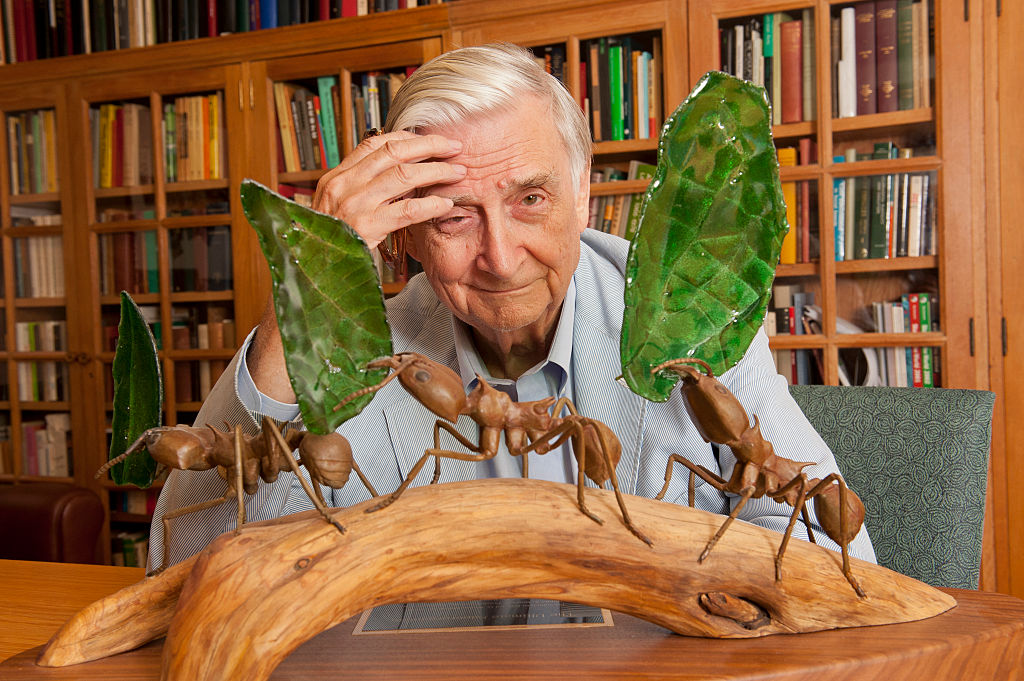From Edward O. Wilson: Biophilia, The Diversity of Life, Naturalist
Interesting Links
Interview: “Edward O. Wilson: I Was Trying to Find Every Kind of Ant” (Marlin E. Rice, American Entomologist)
“On the Accidental Career of E. O. Wilson” (David Quammen, LitHub)
Previous Story of the Week selections by Edward O. Wilson
• “A Magic Kingdom”
• “Krakatau”
Buy the book
 Edward O. Wilson: Biophilia, The Diversity of Life, Naturalist
Edward O. Wilson: Biophilia, The Diversity of Life, Naturalist
List price: $45.00
Save 29%, free shipping
Web Store price: $32.00
Interview: “Edward O. Wilson: I Was Trying to Find Every Kind of Ant” (Marlin E. Rice, American Entomologist)
“On the Accidental Career of E. O. Wilson” (David Quammen, LitHub)
Previous Story of the Week selections by Edward O. Wilson
• “A Magic Kingdom”
• “Krakatau”
Buy the book
 Edward O. Wilson: Biophilia, The Diversity of Life, Naturalist
Edward O. Wilson: Biophilia, The Diversity of Life, NaturalistList price: $45.00
Save 29%, free shipping
Web Store price: $32.00
 |
| Edward O. Wilson in his office at Harvard University. Photo by Rick Friedman/Corbis via Getty Images. |
Yet, for all his successes in so many spheres, he once told fellow scientist Martin E. Rice, “If I’m fortunate enough to get to heaven, I’ll tell St. Peter that I want my gravestone to read, ‘Edward O. Wilson—entomologist.’” Asked whether that would truly capture all his contributions to science, he responded:
I’ll leave that for others, but that certainly captures the core of my life’s commitment. I am always an entomologist and when I do reach that certain level of disability where I can’t go on expeditions anymore or do serious writing, I hope I can still see and hear and be ready to go out into the field even if it is just a short distance, just to find and collect insects and enjoy entomology.When pressed by Rice to identify what fueled his “passion” for entomology, he replied, “from the very beginning it was the thrill of discovery. Even when I was just a little kid hunting for butterflies or a beginning graduate student going into the tropics for the first time, I was searching for rare or new kinds of insects, and to discover new and exciting things about them.”
Wilson, was famous, of course, as “The Ant Man,” a label he embraced. He identified and described hundreds of species of ants that had previously been uncatalogued by scientists. With each discovery came the privilege of naming it and, after a while, he was running out of ideas for names. In his talk with Rice, he recalled the time that he decided to name various species after eight members of the board of directors of Conservation International, an organization in which he was particularly active. For several years one of “one of the most effective and dedicated members of the board” was a famous Hollywood actor, and that is how one ant species came to be called Pheidole harrisonfordi. At the organization’s annual dinner, Wilson awarded his own drawings of each species to the various board members, but Harrison Ford was on location for a new movie. “When he learned that he was going to be presented with an ant named after him,” Wilson recalled, “he actually closed the studio—the whole production—for a couple of days. He got his plane—he is an excellent pilot—and he flew, in a storm no less, to Seattle to be present and get the drawing of his ant.”
During a career spanning more than seven decades, Edward O. Wilson never stopped looking for insects—and amplifying their importance in our natural world. “My intellectual journey gathered momentum in 1953 during a field trip to Cuba’s Sierra Trinidad, as I toiled up muddy roads in search of rain forest, past logging trucks on their way to Cienfuegos with the final fragments of the trees,” he wrote in his book The Diversity of Life. He describes that trip—and other early adventures as a Harvard graduate student—in “Orizaba,” a selection from his memoir Naturalist.
* * *
Almost all my life I have dreamed of the tropics. My boyhood fantasies drifted far beyond the benign temperate zone of Thoreau and Muir. . . . If you don't see the full selection below, click here (PDF) or click here (Google Docs) to read it—free!This selection is used by permission.
To photocopy and distribute this selection for classroom use, please contact the Copyright Clearance Center.
